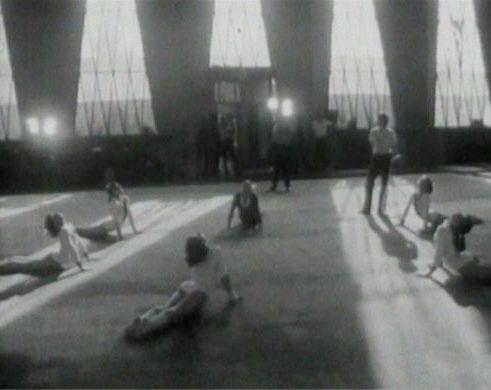
18 minute read
Sally Tykkä Sally Tykkä
Notizen zu den Filmen von Salla Tykkä Notes on the films of Salla Tykkä
In der rumänischen Stadt Onești bewegen sich junge Turnerinnen im
Advertisement
Rhythmus der Traineranweisungen. Wenn sie auf den Füßen landen, erzeugt dies in den großen Hallen ein knallendes, widerhallendes
Geräusch, das an Gewehrschüsse erinnert. Die Trainingshallen wurden zwischen 1966 und 1968 erbaut und waren für das erste Internat gedacht, das allein Kunstturnern vorbehalten war. In den schwarzweißen Anfangsbildern des Films Giant (2014) zeigen Turnerinnen des rumänischen Nationalteams in weißen Trikots ihr Können. Sie waren damals die besten der Welt und wurden einzeln ausgewählt, hier zu studieren. Salla Tykkä erwähnt im Gespräch, dass Dinge, die außergewöhnlich schön und perfekt erscheinen, häufig aus etwas Dunklem und
Gewalttätigem hervorgehen. Giant ist der dritte Film ihrer Serie rund um die Farbe Weiß. Tykkä begann mit der Erkundung eines Bildes – eine perfekten Darbietung auf einem Schwebebalken – und eines wiederkehrenden Alptraums vor dem Hintergrund ihrer eigenen Erinnerungen als Turnerin. Für diesen Film durchforstete Tykkä das gesamte Archivmaterial, das sie beim Fernsehsender TVR (Televiziunea Română) über die Schulen in Deva und Onești finden konnte. Es war nicht mehr viel übrig. Wie die Archivleitung ihr erklärte, waren während des Niedergangs des totalitären Regimes von Nicolae Ceaușescu unzählige Wochenschauaufnahmen aufgelöst worden, um das darin enthaltene Silber einer Wiederverwendung zuzuführen. Einige der Filme wurden auf Video aufgenommen, andere auf Video übertragen, um sie zu bewahren, und Giant enthält einige Fragmente davon. In einem dieser Bilder sehen wir Daniela Silivaș bei Bodenübungen zu einer unheimlichen
Filmmusik (Ermittlungen gegen einen über jeden Verdacht erhabenen Bürger, eine Satire von Elio Petri aus dem Jahr 1970). Die Musik stammt von Ennio Morricone, wie die Musik, die Tykkä in ihrem früheren Film Lasso (2000) verwendet hat. Silivaș gewann 1988 in Seoul
Medaillen in allen sechs Disziplinen.
Giant (2013) In the Romanian town of Onești, young gymnasts move to the rhythm of their trainer’s orders. In the big halls, the sounds of their landing feet slam and echo, a sound reminiscent of gun shots. These training halls were built between 1966 and 1968 and were used for the first boarding school dedicated only to artistic gymnastics. In the black and white opening images of the film Giant (2014), gymnasts of the Romanian national team are performing in white leotards. At that time they were the best in the world, hand-picked to study here. When discussing the film with Salla Tykkä, she says things that seem exceptionally beautiful and perfect often originate from somewhere dark and violent. Giant is the third film in her series of films around the theme of the colour white. Tykkä started her investigation into an image – a perfect performance on a balance beam – and a reoccurring nightmare based on her memories as a gymnast herself. For this film, Tykkä went through all of the archival material she could find at the TVR (Televiziunea Română) about the Deva and Onești schools. There was not much left. At the archive, the manager explained to her that during the time of the decaying totalitarian regime of Nicolae Ceaușescu, countless newsreels were dissolved, and the silver they contained was collected and recirculated. Some of the films were shot on video and some transferred to video in order to preserve them, and we can see fragments of these in Giant. In one of the images, we see Daniela Silivaș performing a floor routine to an uncanny film score (Investigation of a Citizen Above Suspicion, a 1970 satire by Elio Petri). The music is by Ennio Morricone, like the music Tykkä used in her earlier film Lasso in 2000. Silivaș won a medal in each of the six competitions in Seoul in 1988. Is it possible to really find the real place anymore? The young gymnasts look through the windows of the castle ruins overlooking the town of Deva. Sound is hauntingly cut off from the image, and the gymnasts’ moves are cut together, forming a prodigious series of motion. In an image (cinema) we always see a world that no longer is, a fragment of time. At the time I am writing this, it has been one year since the pandemic hit Europe. The world we see in pictures – the new landscapes, the thrill of travelling, the way of life – will never look quite the same. Film has really become a window to the world in a whole new way, as well as a window to the past – and if you happen to be a filmmaker, it is also a window to a former self. In a shaky Super8 image, we see penguins flocking and seals bathing in the sun on a beach. In Retrospective (2016), Tykkä goes through the cameras she has used in her work over the years. Her handling of the camera equipment reminds us of the muscle memory of loading film and locking the objectives. The Super8 films Tykkä made while travelling in Patagonia and Tierra del Fuego in 1997 are juxtaposed with her hesitating voice and words, and this relationship to cameras creates an intimate self-portrait. You become aware and sensitive to the camera behind the images, a feeling stretching to the following films. The film Europe – Europa (2020) had its starting point in 2011, when Tykkä received a letter from someone from her past, an older man she had met as a teenager when Interrailing in the early 1990s. The man had written a short story and used Tykkä and her travel companions
Ist es überhaupt noch möglich, den richtigen Ort zu finden? Die jungen Turnerinnen blicken durch die Fenster einer Burgruine, die über der Stadt Deva liegt. Der Ton ist auf eindringliche Weise vom Bild gelöst und die Bewegungen der Turnerinnen sind zu einer beeindruckenden Bewegungsfolge zusammengeschnitten. In (Film-)Bildern sehen wir stets eine Welt, die nicht mehr existiert, ein Zeitfragment. Zu der Zeit, als ich dies schreibe, ist es ein Jahr her, dass die Pandemie Europa getroffen hat. Die Welt, die wir im Bild sehen – mit den neuen Landschaften, den Freuden des Reisens, dem Lebensstil –, wird nie mehr genau so aussehen wie vorher. Film ist wirklich auf ganz neue Art und Weise ein Fenster zur Welt geworden, ebenso wie er ein Fenster zur Vergangenheit ist – und falls man zufällig filmschaffend ist, auch ein Fenster zu einem früheren Selbst. In verwackelten Super-8-Bildern sehen wir Scharen von Pinguinen und Robben, die an einem Strand in der Sonne baden. In Retrospective (2016) geht Tykkä all die Kameras durch, die sie im Laufe der Jahre bei ihrer Arbeit verwendet hat. Ihr Umgang mit der Kameraausrüstung erinnert an das Muskelgedächtnis des Filmeinlegens und des Montierens der Objektive. Die Super-8-Filme, die Tykkä 1997 auf Reisen in Patagonien und Feuerland aufgenommen hat, werden begleitet von ihrer zögerlichen Stimme und ihren Worten und diese Beziehung zu den Kameras lässt ein intimes Selbstporträt entstehen. Wir werden uns der Kamera hinter den Bildern bewusst und dafür sensibilisiert – ein Gefühl, das auch für die folgenden Filme gilt. Die Idee zu dem Film Europe – Europa (2020) entstand durch einen Brief, den Tykkä 2011 von einem älteren Mann erhielt, den sie als Teenager Anfang der 90er auf einer Interrail-Reise kennengelernt hatte. Der Mann hatte eine Kurzgeschichte geschrieben, in der Tykkä und ihre Mitreisenden als Figuren vorkamen. Über drei Jahre treffen sich die beiden in dem kleinen Dorf, in dem der Mann jetzt lebt, lesen gemeinsam die Geschichte und diskutieren darüber. Der Ton ist abgeschnitten, die Musik stoppt und die Linse der Kamera wird von einer Hand abgedeckt. Es gibt einen Kampf gegen ein Narrativ, das andere über dich erzählen wollen, gegen die Geschichte, die die Welt über Frauen erzählen will. Ein Recht, sein Leben selbst zu erschaffen, ein Leben, das nicht von Männern erzählt wird. Der Film fragt nach der Funktion der Kunst und nach Möglichkeiten, die Realität zu nutzen. Letztendlich schildert der Film einen Prozess, durch den die Künstlerin die Geschichte mit ihrer eigenen Stimme übernimmt.
Tykkä reiste damals mit der Schauspielerin Saija Lentonen nach Italien. Zusammen treten sie in dem Film auf. Lentonen hat auch in Tykkäs Film vor 20 Jahren mitgewirkt. In der Schlussszene von Europe – Europa geht sie über eine Brücke und verschwindet, und im nächsten Film, Lasso (2000), läuft sie als ihr jüngeres Ich ins Bild. Das Mädchen geht in einen Garten und betrachtet durch große Fenster einen Mann, der in einem Wohnzimmer vertikale Schleifen mit einem Lasso vollführt. Die ergreifende Titelmelodie aus Sergio Leones Spiel mir das Lied vom Tod (1968) lädt in die Welt des Kinos und eine ferne Welt ein. Die Kombination dieser beiden Filme liefert eine interessante Grundlage, um Figur und Alter Ego zu studieren, das Gefühl, nicht dazuzugehören, und das Verlangen, die Kontrolle über das eigene Leben und die eigene Geschichte zu übernehmen. Genauso wichtig, wie sich selbst und seine Vergangenheit zu untersuchen, um die Welt zu verstehen, ist es für Filmschaffende, sich mit ihren älteren Werken und Figuren auseinanderzusetzen. Filme erzeugen ein Gedankenkontinuum, wie Notizen in einem Notizbuch, das wir uns anschauen können, um zu begreifen, woher wir kommen. In Tykkäs Arbeiten wird das Kino beständig demontiert und rekonstruiert, wobei sie sich sowohl populärkultureller Mittel wie dem Western als auch der sehr persönlichen und poetischen Form des Essays bedient. 24.12.1997 (2016) ist eine kurze Videoarbeit, in der Tykkä in Feuerland aufgenommenes Tonmaterial verwendet. In dieser Arbeit sehen wir in Nahaufnahme, wie eine Kompaktkassette zurückgespult und dann abgespielt wird. Zu hören ist ein Geräusch, bei dem es sich um Wind handeln könnte. Beim Abspielen des unbearbeiteten Tons von der Kassette werden immer wieder Fotografien aus einer anderen Zeit und von einem anderen Ort eingeblendet, vielleicht die Art von Fotografien, von denen Tykkä in Retrospective sagt, dass sie sie nicht in Anwesenheit von jemand anderem hätte machen können. Der vierte Film in der Reihe rund um die Farbe Weiß und der bisher längste von Tykkäs Filmen ist Untitled (White – Alps) (2019). Hier fahren wir in einem Heißluftballon über die Alpen. In diesem Film liegt das Poetische in der Wissenschaft. Tykkä hat führende finnische Wissenschaftler aus den Bereichen Elementarteilchenphysik, Kosmolo-
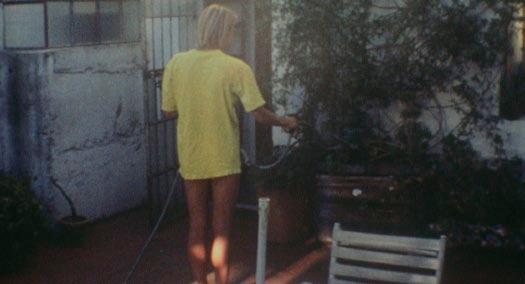
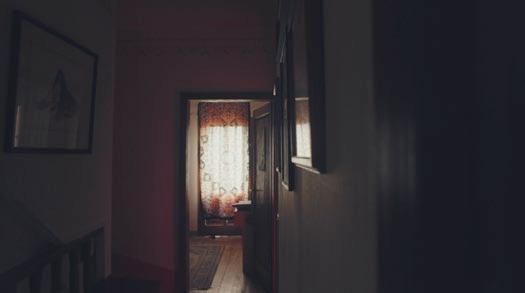
Retrospective (2016), Europe – Europa (2020)
as characters in his story. Over the course of three years, the two meet, read the story together and discuss it in a small village where the man now lives. The sound is cut, music stops and the camera lens is covered by a hand. There is a struggle against a narrative that others try to tell about you, the story the world tries to tell about women. A right to create your own life, a life not to be narrated by men. The film asks what art’s function is and how to use the real. In the end, the film depicts a process through which the artist takes over the story using her own voice.
Tykkä travelled to Italy with the actor Saija Lentonen, and they performed together in the film. Lentonen also acted in Tykkä’s film 20 years ago. In the final scene of Europe – Europa she walks away over a bridge and vanishes, and in the next film, Lasso (2000), she runs into the image as her younger self. The girl walks into a garden and through the large windows she sees a man inside a living room performing vertical loops with a lasso. The elevating theme from Once Upon A Time in the West (directed by Sergio Leone in 1968) invites us to a world of cinema and a world far away. When combined, these two films offer an interesting basis to study the character and the alter ego, the feeling of not belonging and the urge to take control of your own life and your story.
Just as you have to study yourself and your past to understand the world, it is equally important for a filmmaker to study their older works and characters. Films create a continuum of thought, like the notes in a notebook, that you can visit and try to grasp where you are coming from. In her work, Tykkä constantly dismantles and reconstructs the cinema, ranging from the means of popular culture, like the Western, to the very personal and poetic of the essay form. 24.12.1997 (2016) is a short video work where Tykkä uses sound material recorded in Tierra del Fuego. In this work, we see a close-up of a c-cassette being rewound and then played, producing a sound which could be recognised as the sound of wind. While the unedited sound from the c-cassette is playing, photographs from another time and place cut the image, perhaps the kind of photographs of which she says in Retrospective that ‘I couldn‘t have taken in anyone else’s presence’.
The fourth film in the series around the colour white, and so far the longest of Tykkä’s films, is Untitled (White – Alps) (2019). In the film we travel in a hot air balloon above the Alps. In this film, the poetic is in the scientific. Tykkä interviewed leading Finnish scientists in the fields of elementary particle physics, cosmology, microbiology and brain research, and their words are translated into English by simultaneous interpreters.
We listen to the words of the interpreters and the occasional dis-
gie, Mikrobiologie und Hirnforschung interviewt und deren Worte von Simultandolmetscherinnen ins Englische übertragen lassen. Wir hören das, was die Dolmetscherinnen sagen, und ab und an eine Unterhaltung des Kamerateams. Wir sehen Hände, die die Klappe für die Synchronisation machen und die Anzahl der Takes anzeigen. Im Bild sehen wir den Morgenbeginn, die aufgehende Sonne über den Berggipfeln, und die Stimme erzählt uns von der ersten Sekunde des Universums. Das Zögern in der Stimme der Dolmetscherin wird mit der Tatsache verbunden, dass es noch so viel gibt, was wir nicht wissen. Der Film hat eine ganz eigene Zeitlichkeit, die Ballonzeit. Wir befinden uns im Ballon und betrachten eine ganze Weile dieselbe Landschaft, aus unterschiedlichen Höhen und Blickwinkeln. Da wir mit dem Wind reisen, können wir ihn nicht hören und das langsame Drehen des Ballons ersetzt das Schwenken der Kamera. Manchmal bietet sich uns ein Blick auf Täler und Bergbäche in der Gegend von Chamonix-MontBlanc, der Landschaft, die der Ballon überquert. Während milchfarbene Bergbäche sprudeln, lauschen wir Vermutungen, wie schwarze Löcher funktionieren. Stopps und Standbilder sind wie Verständnislücken, die den Gedankenfluss unterbrechen und uns ständig daran erinnern, wie ein bewegtes Bild entsteht. Die grundlegenden Elemente, das Wasser, die Sonne und die Luft werden durch die Verwendung eines Ballons verständlicher. Auch der Film wird zu einem dieser Elemente. Für die Filmemacherin beinhalten die Filme die Erinnerungen an ihre Entstehung. cussion of the crew behind the camera. We see the hands making the clap for the sync and showing the number of takes. In the image, we see the first moments of the morning, how the sun emerges over the mountain tops, and the voice tells us about the first second of the universe. The hesitation of translator’s voice is connected to the fact that there is still so much unknown to us.
The film has its very own temporality, the time of the balloon. We are in the balloon and watch the same scenery for a long time, from different altitudes and different sides. We hear no wind as we travel with the wind, and the slow spinning of the balloon makes the pan for the camera. At times we see glimpses of the valleys and mountain streams, filmed in the valleys of Chamonix-Mont-Blanc, the scenery below the balloon. Milk-coloured mountain streams whirl while we listen to the estimates of how the black holes work. Stops and freeze frames are like gaps in understanding, jamming the flow of thinking, constantly reminding us how a moving image is made. The fundamental elements, the water, the sun, and the air are made more understandable by the use of a balloon. Film becomes one of these elements, too. For the filmmaker, the films contain the memories of their making.
Liinu Grönlund Filmmaker and artist living and working in Helsinki
Liinu Grönlund Filmemacherin und Künstlerin, lebt und arbeitet in Helsinki
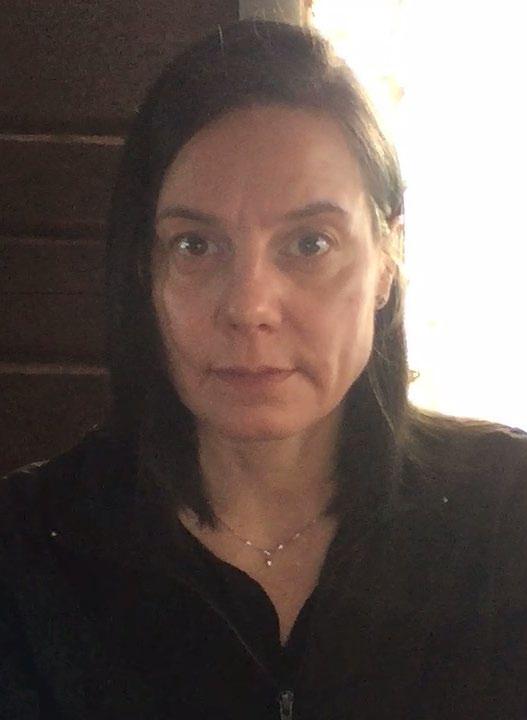
Kontakt Contact
salla@sallatykka.com sallatykka.com Salla Tykkä arbeitet seit 1996 mit Film und Video. 2003 machte sie ihren Abschluss an der Kuvataideakatemia in Helsinki. Tykkä arbeitet mit bewegten wie unbewegten Bildern. Ihre Werke, in denen sie Fragen zu Macht, Herrschaft und zum Bild aufwirft, legen Mechanismen des menschlichen Blicks und Formen der Repräsentation offen. Ihre Arbeiten haben stets einen starken, aber indirekten Bezug zum Persönlichen. Häufig untersucht sie in ihren Filmen Strukturen menschlichen Denkens und der Gesellschaft sowie deren Zusammenspiel. Ihr Abschlussprojekt an der Kuvataideakatemia, Lasso (2000), zeigt einen kurzen Moment im Leben einer jungen Frau. Eine klassisch konstruierte Filmszene entwickelt sich zu einer Allegorie des Aufeinanderprallens des Privaten mit dem Öffentlichen, der inneren mit der äußeren Welt. Diese Themen ziehen sich bis heute durch Tykkäs gesamtes Werk. Sie hatte viele Einzelausstellungen in verschiedenen Museen und Galerien und hat an zahlreichen Gruppenausstellungen in Finnland und im Ausland teilgenommen. Ihre Filme sind häufig auf Filmfestivals zu sehen. Im Jahr 2014 wurde Tykkäs Film Giant auf dem Rotterdamer Filmfestival mit dem Canon Tiger Award für Kurzfilme ausgezeichnet. Salla Tykkä has worked with film and video since 1996. Tykkä graduated from the Academy of Fine Arts in Helsinki 2003. She works with both moving and still image. Her work raises questions of power, domination and images, and it opens mechanisms of human gaze and forms of representation. Her work always has a strong but indirect relationship with the personal. Her films are often inquiries into the structures of the human mind and society, as well as the interplay between them. Her thesis project at the Academy of Fine Arts, Lasso (2000), depicts a short moment of young woman’s life. A traditionally constructed film scene grows into an allegory of the private colliding with the public, the inner with the outer world. These themes have been recurring in her body of works up until the present day. Tykkä has had many solo exhibitions in different museums and galleries, and she has participated in numerous group exhibitions in Finland and abroad. Her films are a frequent addition to film festivals. In 2014, Tykkä’s film Giant was recognised with the Canon Tiger Award for Short Films 2014 at the Rotterdam Film Festival.
Europe – Europa (2020), Untitled (White-Alps) (2019), 24.12.1997 (2016), Retrospective (2015), Palace (2015), Giant (2014), Equestrian (2012), Airs Above the Ground (2010), Victoria (2008), Zoo (2006), Cave (2003), Thriller (2001), Lasso (2000), Power (1999), Bitch (1997), My Hate is Useless (1996), Pure Hate (1996)

Giant
Finnland Finland 2013 12'47", Farbe, Schwarzweiß colour, black-and-white, Englisch, Rumänisch, English, Romanian Regie Director Salla Tykkä, Buch Script Salla Tykkä, Ton Sound Janne Jankeri, Schnitt Editor Salla Tykkä Der Film zeigt Turnerinnen des rumänischen Jugend-Nationalteams, die in Internaten in Onești und Deva leben und trainieren. Die Erinnerung an diese Turnhallen wird zur Erinnerung ihrer Körper. The film features Romanian junior team gymnasts living and training in the boarding schools of Onesti and Deva. The memory of these training halls is written into the memory of the bodies.

Retrospective
Finnland Finland 2016 15'17", Farbe, Schwarzweiß colour, black-and-white, Finnisch mit englischen Untertiteln Finnish with English subtitles Regie Director Salla Tykkä, Buch Script Salla Tykkä, Ton Sound Katja Kostiainen, Schnitt Editor Salla Tykkä, Tongestaltung Sound design Johannes Elo, Janne Jankeri, Mit With Salla Tykkä Ein kurzer Film über die Schwierigkeit des Erinnerns und die Bedeutung des Vergessens. A short film about the difficulty of remembering and the importance of forgetting.
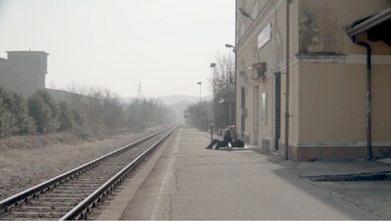
Europe – Europa
Finnland, Italien Finland, Italy 2020 43'52", Farbe colour, Englisch English Regie Director Salla Tykkä Der Film ist eine Untersuchung der Macht und der Position der Autorin. Er zeigt, dass die Mittel, mit denen wir die Welt verstehen, beschreiben und dokumentieren, diese Welt verändern und konstruieren. The film is an inquiry into the power and position of the author. It shows that the means we use to understand, describe and record the world, change and construct it.
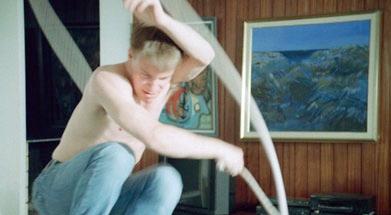
Lasso
Finnland Finland 2000 4'06", Farbe colour, ohne Text without text Regie Director Salla Tykkä, Buch Script Salla Tykkä, Schnitt Editor Salla Tykkä, Mit With Saija Lentonen, Tuomo Aho Lasso zeigt einen Moment im Leben einer jungen Frau; den Moment, in dem die eigene Unfähigkeit, sich dem anderen – oder sogar sich selbst – zu stellen, in ein mächtiges Gefühl gequetscht wird, irgendwo am Rande des Unwirklichen. Lasso exposes a moment in a young woman‘s life; the moment at which one‘s inability to face the other – or oneself, even – is squeezed into a powerful sensation somewhere on the edge of the unreal.
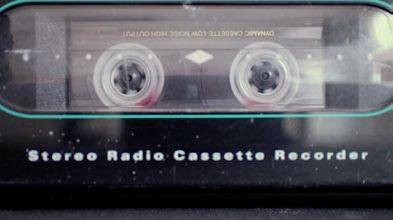
24.12.1997
Finnland Finland 2016 1'23", Farbe, Schwarzweiß colour, black-and-white, ohne Text without text Regie Director Salla Tykkä Auf der Kompaktkassette gab es keine Angaben zu ihrem Inhalt. Eine Zeit lang konnte ich mich nicht daran erinnern, um was es sich bei diesem unbekannten Geräusch handelte. Oder war die Kassette einfach nur abgenutzt oder mein Abspielgerät kaputt? The c-cassette didn’t have any description of what it had inside, and for a while I could not recall what the unfamiliar noise was, or was it just worn out or if the player I used was broken.

Untitled (White – Alps)
Finnland, Schweiz, Frankreich Finland, Switzerland, France 2019 68', Farbe colour, Englisch English Regie Director Salla Tykkä, Buch Script Salla Tykkä, Schnitt Editor Salla Tykkä, Tongestaltung Sound design Janne Jankeri Ein Film über das Hinsehen und das menschliche Bedürfnis, die Welt zu sehen und zu verstehen, und über die Grenzen unserer Sinne, je tiefer der Verstand Materie, Zeit und Raum durchdringt. A film about looking and the human need to see and understand the world, and about the limits of the sensory system, as the mind penetrates deeper into matter, time and space.










